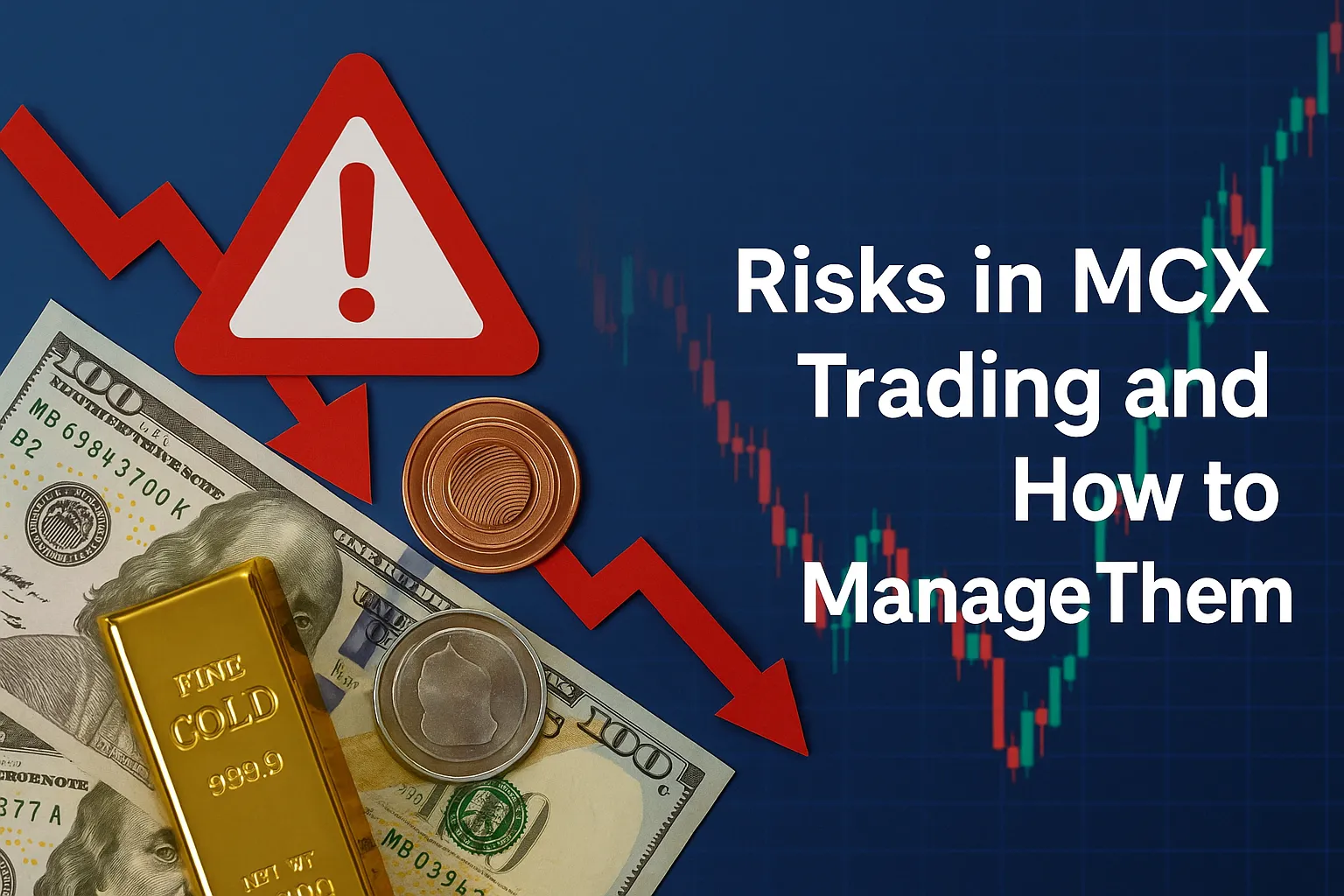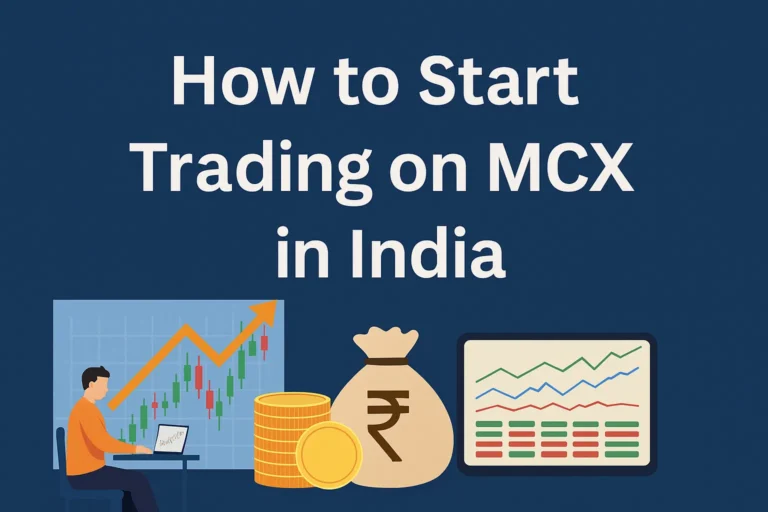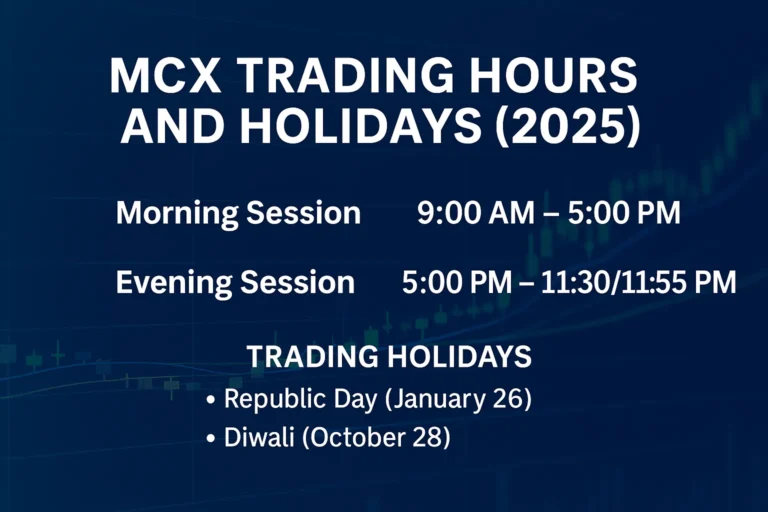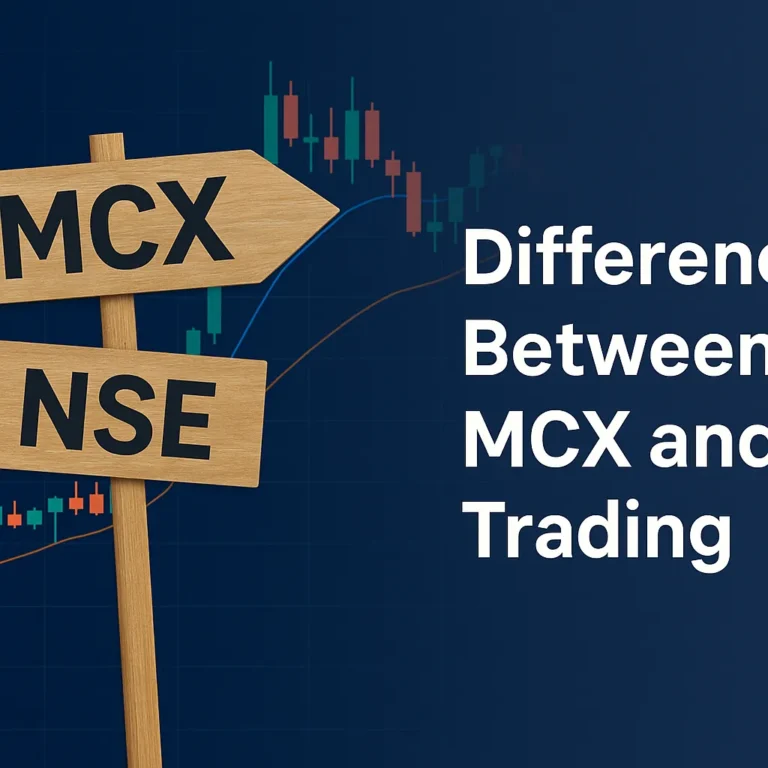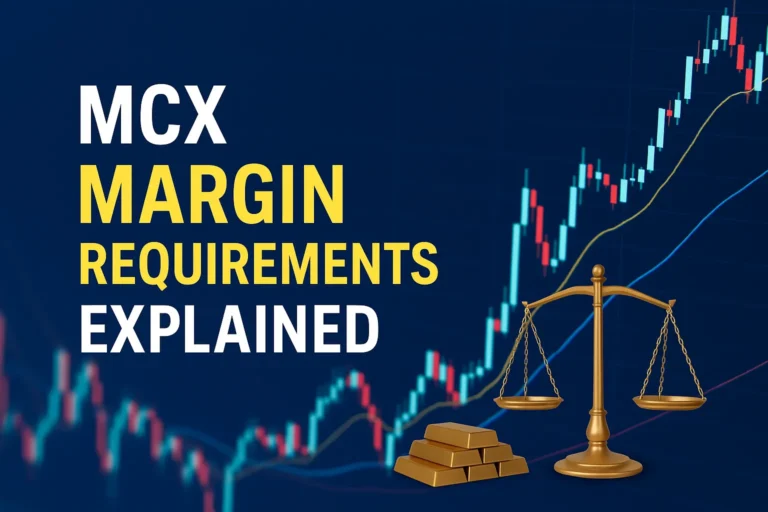Risks in MCX Trading and How to Manage Them
MCX trading offers lucrative opportunities in commodities like gold, crude oil, and silver. However, just like any financial market, it comes with its own set of risks. Without proper knowledge and discipline, traders can face significant losses.
In this article, we’ll explore the main risks involved in MCX trading and provide effective strategies to manage and minimize them.
1. Leverage Risk
What it is:
MCX trading uses margin-based leverage, allowing traders to take larger positions with smaller capital. While this increases profit potential, it also amplifies losses.
Risk Management Tip:
- Use minimal leverage, especially as a beginner.
- Trade with only the capital you can afford to lose.
- Always use stop-loss orders to limit downside.
2. Price Volatility
What it is:
Commodities like crude oil and natural gas are highly volatile. Price fluctuations are influenced by global events, economic data, and weather patterns.
Risk Management Tip:
- Avoid trading during high-impact news events unless you’re experienced.
- Stick to commodities with lower volatility, like gold mini or silver micro, when starting out.
3. Lack of Diversification
What it is:
Focusing all trades on one commodity (e.g., only crude oil) increases risk due to overexposure to that commodity’s specific market movements.
Risk Management Tip:
- Diversify across different commodities (bullion, energy, metals).
- Avoid putting all capital into one trade or one sector.
4. Liquidity Risk
What it is:
Some lesser-traded commodities or contracts (like mentha oil or cardamom) have low trading volumes, leading to slippage or poor order execution.
Risk Management Tip:
- Stick to high-liquidity contracts like Gold, Crude Oil, Silver, Copper.
- Check open interest and volume before entering a trade.
5. Overtrading
What it is:
Trading too frequently or emotionally chasing profits can lead to burnout and financial loss.
Risk Management Tip:
- Follow a pre-defined trading plan.
- Limit the number of trades per day and avoid revenge trading.
6. Lack of Knowledge
What it is:
Many traders jump into MCX without understanding contract specifications, margin rules, or market dynamics.
Risk Management Tip:
- Spend time learning about commodity contracts, lot sizes, and chart analysis.
- Use paper trading or demo accounts before risking real money.
7. Emotional Trading
What it is:
Fear, greed, and impatience often lead traders to abandon their strategy and make impulsive decisions.
Risk Management Tip:
- Stay disciplined and follow your stop-loss and target levels.
- Avoid trading under stress or in emotionally charged conditions.
8. Regulatory and Taxation Risk
What it is:
Changes in SEBI regulations, margin requirements, or tax policies can affect your trading performance or capital requirements.
Risk Management Tip:
- Keep up with SEBI updates and broker communications.
- Maintain proper books and consult a tax advisor for compliance.
FAQs
Is MCX trading safe for beginners?
It can be safe if approached with proper education, capital protection rules, and risk management strategies in place.
How much capital should I risk per trade?
Most experts recommend risking no more than 1-2% of your total capital on a single trade.
Are stop-loss orders necessary in MCX?
Absolutely. Stop-loss is a critical tool to prevent large losses during volatile market conditions.
What’s the best way to reduce risk as a new MCX trader?
Start small, use strict stop-loss levels, trade in liquid commodities, and avoid over-leveraging.
Can I practice MCX trading without real money?
Yes, some brokers offer demo accounts or simulated trading environments to practice before live trading.

